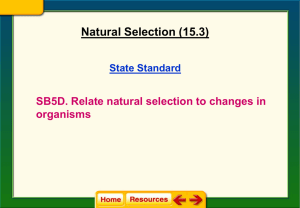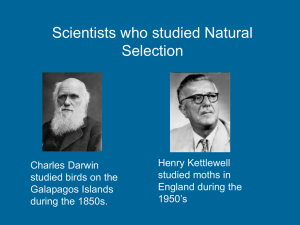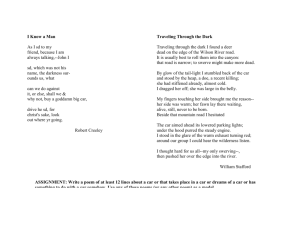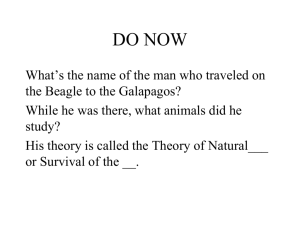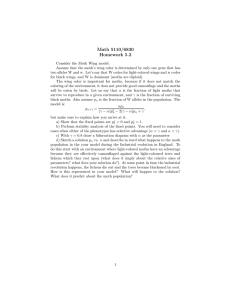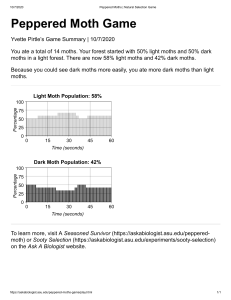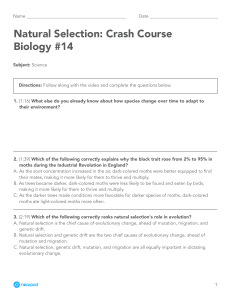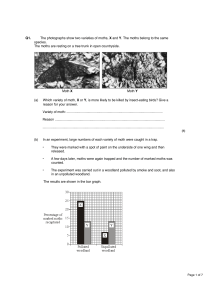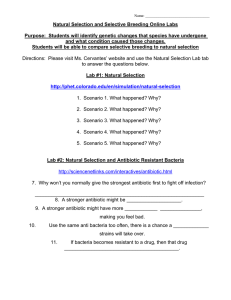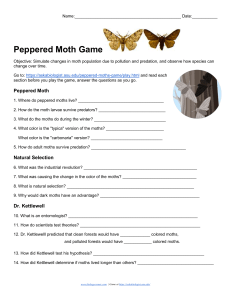Document 15566773
advertisement
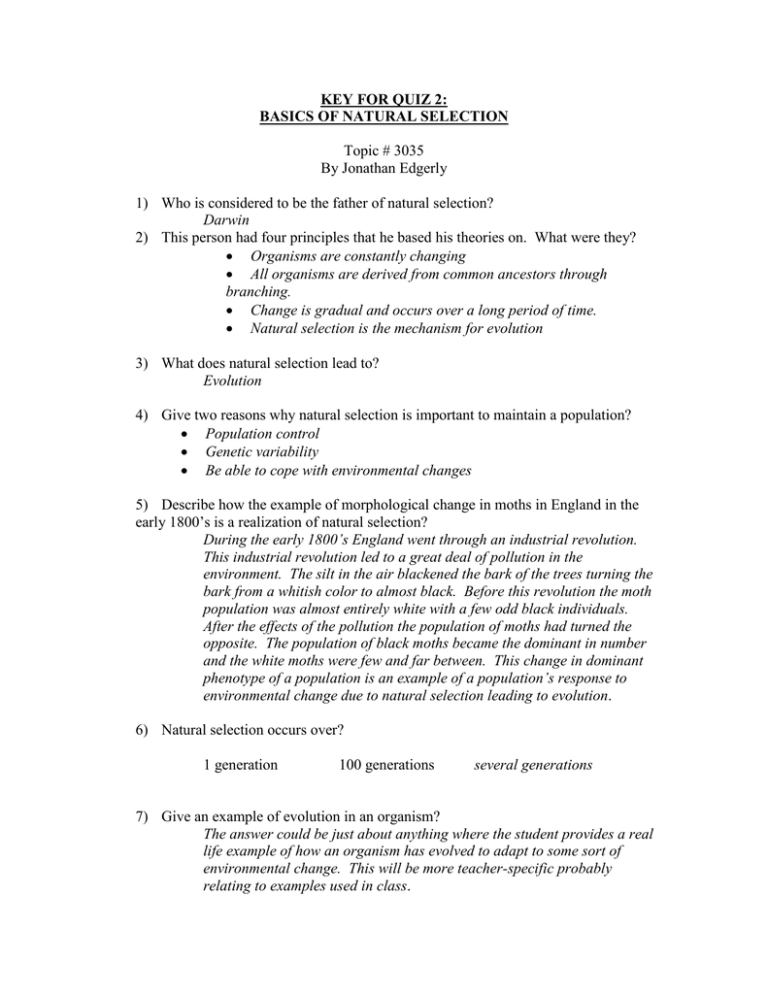
KEY FOR QUIZ 2: BASICS OF NATURAL SELECTION Topic # 3035 By Jonathan Edgerly 1) Who is considered to be the father of natural selection? Darwin 2) This person had four principles that he based his theories on. What were they? Organisms are constantly changing All organisms are derived from common ancestors through branching. Change is gradual and occurs over a long period of time. Natural selection is the mechanism for evolution 3) What does natural selection lead to? Evolution 4) Give two reasons why natural selection is important to maintain a population? Population control Genetic variability Be able to cope with environmental changes 5) Describe how the example of morphological change in moths in England in the early 1800’s is a realization of natural selection? During the early 1800’s England went through an industrial revolution. This industrial revolution led to a great deal of pollution in the environment. The silt in the air blackened the bark of the trees turning the bark from a whitish color to almost black. Before this revolution the moth population was almost entirely white with a few odd black individuals. After the effects of the pollution the population of moths had turned the opposite. The population of black moths became the dominant in number and the white moths were few and far between. This change in dominant phenotype of a population is an example of a population’s response to environmental change due to natural selection leading to evolution. 6) Natural selection occurs over? 1 generation 100 generations several generations 7) Give an example of evolution in an organism? The answer could be just about anything where the student provides a real life example of how an organism has evolved to adapt to some sort of environmental change. This will be more teacher-specific probably relating to examples used in class.
